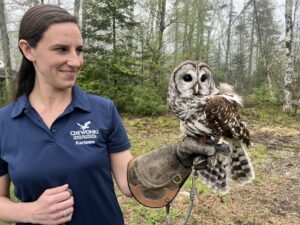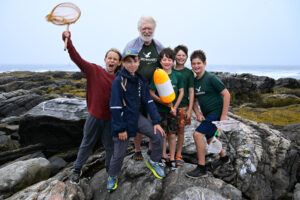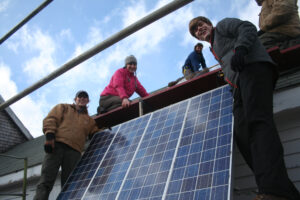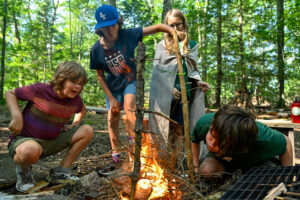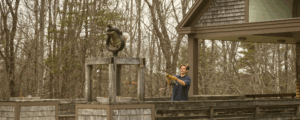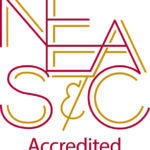It’s not a joke; it’s our three new Traveling Natural History Program teammates- Kerianne Gwinnell, Tippy the woodchuck, and Sylvie the red-tailed hawk!
Kerianne is our dynamic new Director of Chewonki’s Traveling Natural History Program! From teaching about marine life to managing camp fun, Kerianne’s done it all. Before joining us at Chewonki, she wowed students as the Aquatic Science Educator at Herring Gut Coastal Science Center and Director of School Programs at Cape Cod Maritime Museum. Plus, she’s pursued her passion for protecting our oceans through coastal restoration work and marine ecology research.
Between scheduling presentations and feeding raptors in our wildlife center, Kerianne graciously answered a few questions to help introduce herself:
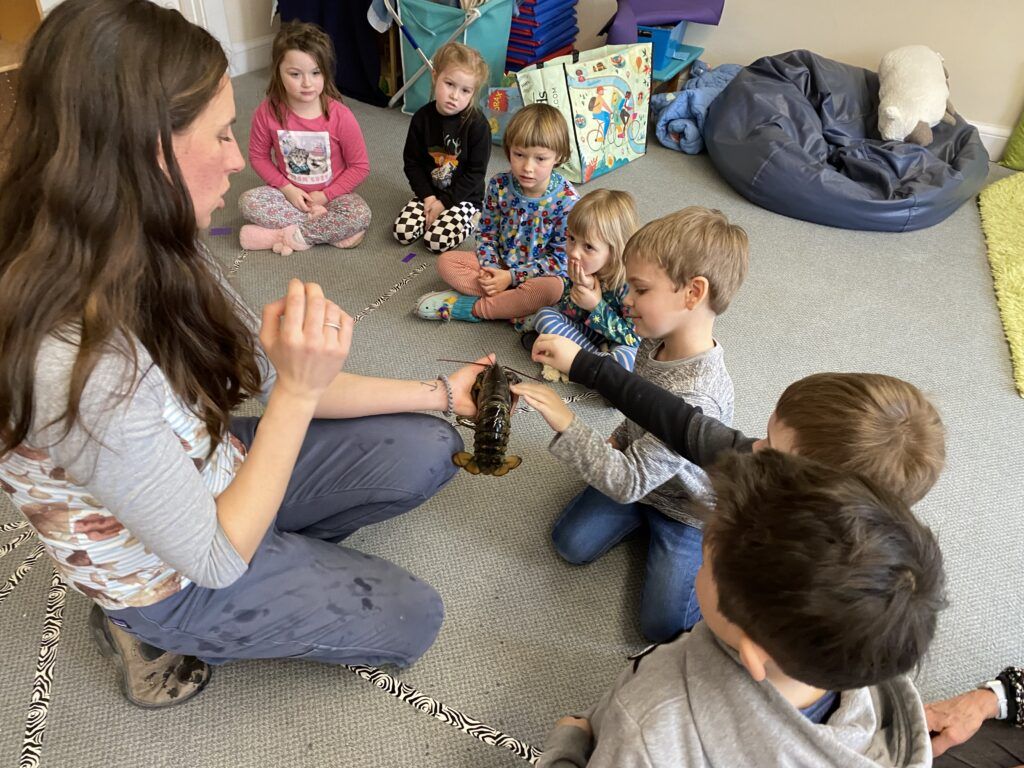
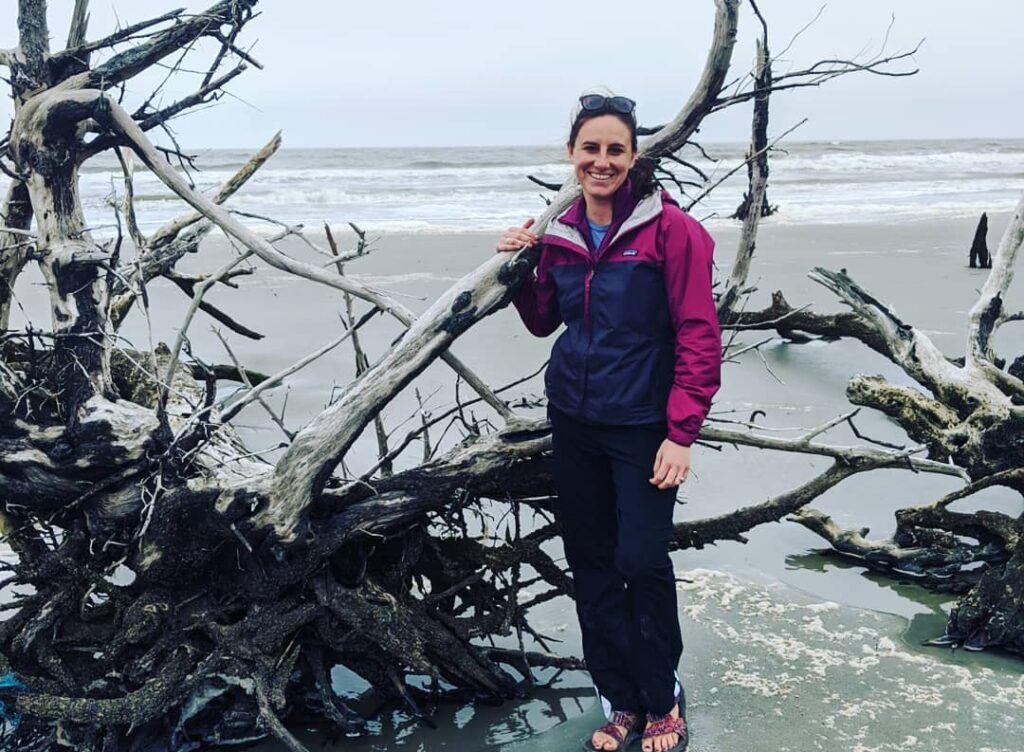
Q. Before working at Chewonki, what was your most unusual or interesting job?
Kerianne: Before working at Chewonki, my most interesting job was as director of Clemson University’s Marine Science Camp in South Carolina. One of the most enjoyable parts was ferrying people along the Intracoastal Waterway to a barrier island. The ecosystem was so dynamic that we never knew what we would find out there!
Q. What, most recently, has made you feel notably joyful?
Kerianne: Spending time outside with my family. In March, we took my daughter out in the evenings to show her salamanders and frogs that were crossing the road. Last weekend, we visited the fish ladder to watch the alewives migrate. To see her smile as she experiences all of these things at such a young age makes me truly joyful.


Left: Kerianne on a birding walk with her daughter. Right: Kerianne leads a water quality monitoring workshop attended by her husband, Phil.
Q. What’s one thing you’re learning now?
Kerianne: Balance.
Q. What’s something you’ve done but will never do again?
Kerianne: That’s a tough one. I once flew a small plane (with some guidance). I don’t think I’d do that again.
Q. Can you describe a moment in your life that helped put you on your current career path?
Kerianne: I spent about a month in the British Virgin Islands doing coral reef restoration in college. I assisted with a small camp program and led children on a snorkeling tour. I taught them about coral and the challenges coral reefs face. I’ll never forget when a little girl with red hair and freckles surfaced and exclaimed, “We have to help the sea fans!” At that moment, I knew I wanted to provide experiences that connect people to the natural world.
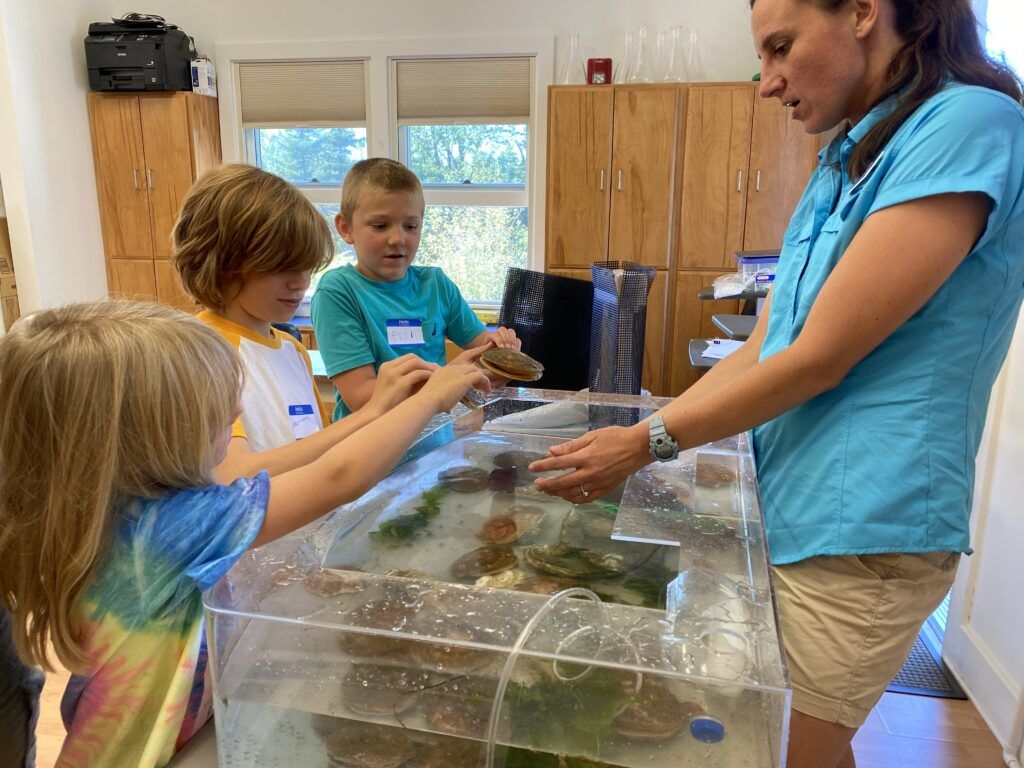
Welcome, Kerianne! Next, Science Educator Kyle Wonser introduces us to our two new animal ambassadors:
Tippy is Chewonki’s only current Mammal animal ambassador. She is a female woodchuck (also known as a groundhog, or a ‘whistle-pig’) who suffered some head trauma in December of 2022 and recovered in the care of The Lake Metroparks in Ohio. While she is healthy overall, she does not show typical defensive behaviors of woodchucks and shows signs of incoordination at times. Her name, ‘Tippy’, comes from this uncoordinated quirk – when she is eating, she can occasionally become so preoccupied with her food that she will lose her balance and ‘Tip’ over!

Tippy was likely born in Ohio in spring 2022, making her two years old. Woodchucks live five-to-six years in the wild and can live up to nine years in captivity. So we hope Tippy will be with us for some time! As Chewonki’s resident Mammal, you can expect Tippy to be helping out on programs such as Mammals of Maine, Fur, Feathers and Feet, and Animal Adaptations.
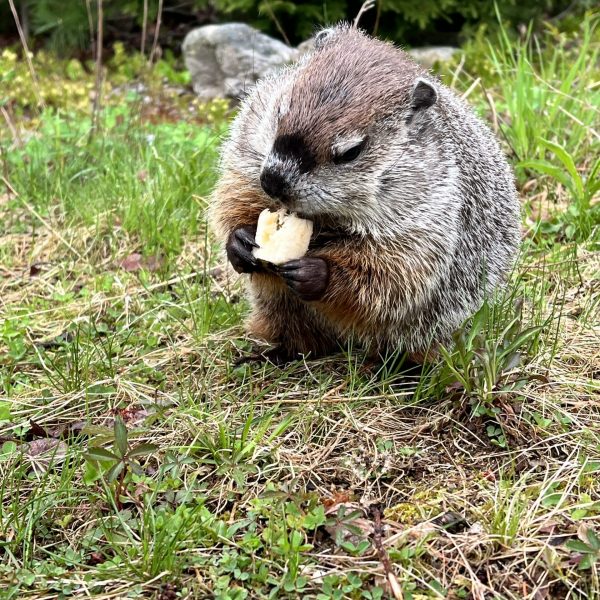
A few fun facts–woodchucks belong to the squirrel family and are one of the largest ground squirrels in Maine. They are fine burrowers and build their homes underground, where they will safely sleep and rear their young. Woodchucks are one of Maine’s three ‘true’ hibernators (the others being bats and jumping mice), meaning they will snooze the entire winter away with no breaks in between.
Sylvie is a young Red-Tailed Hawk from the Tamarack Wildlife Center in Pennsylvania. We know that Sylvie is only one year old, born in the Spring of 2023, because she still has her ‘baby feathers,’ or juvenile plumage. She has yet to grow in her distinctive red tail! As she molts out her old feathers (which is happening right now!), she will replace her juvenile plumage with her adult plumage. Once she does, she will keep those red feathers for the rest of her life. Sylvie is with us at Chewonki because of a visual handicap. She has retinal detachment of the right eye and came in with a severe concussion, but thankfully, no major fractures. This retinal detachment causes blindness in her right eye. To be a healthy raptor, or ‘bird of prey,’ in the wild, you need to have two good eyes for locating your prey, two good wings to reach your prey, and two good talons to hold on! With only one functioning eye, Sylvie lacks the depth perception to hunt and out-compete other hawks for territory effectively. She will spend her entire life at Chewonki as a permanent resident, living in our outdoor aviaries with her many nocturnal neighbors. Red-Tail Hawks can live upwards of 20 years, so we look forward to decades of adventures with Sylvie on our team. :)

Photo credit: Melanie Tepper
Sylvie will join the traveling programs in our Adaptations, Predators, Fur, Feathers and Feet, and Calling All Birds Programs. Comparable in size and stature to a Great Horned Owl, she’s sure to be a visually thrilling animal ambassador!
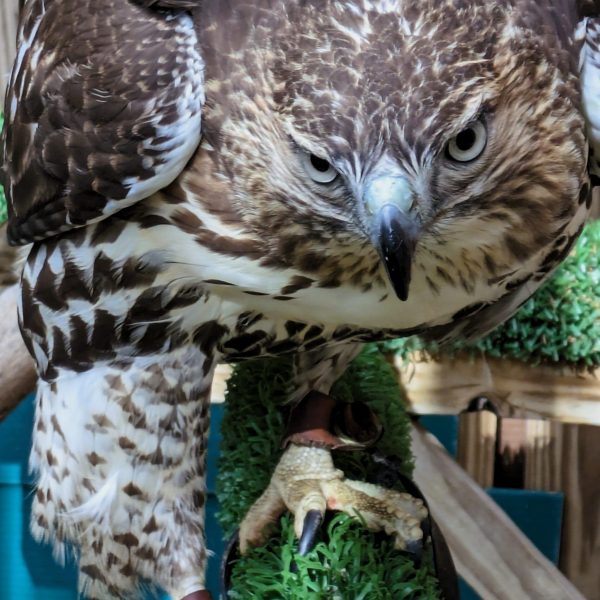
Please join us at an upcoming Traveling Natural History Program Presentation to meet Kerianne, Tippy, Sylvie, and all educators and animal ambassadors.
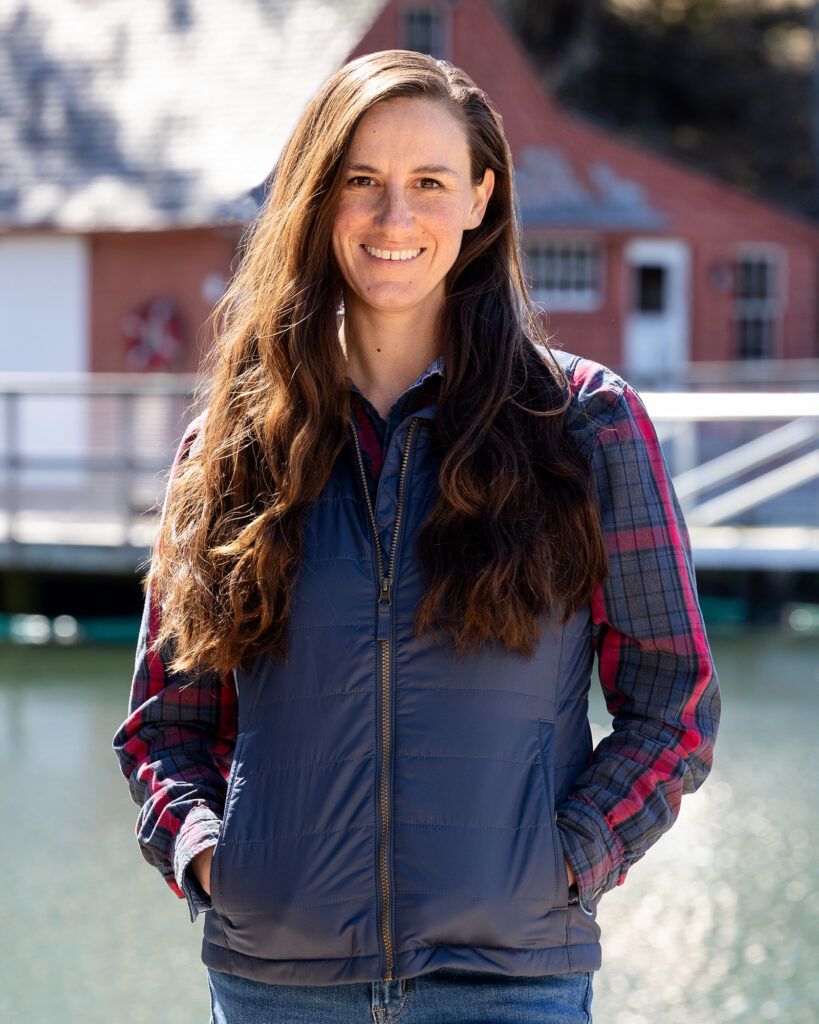
Interested in connecting with Kerianne? Email kgwinnell@chewonki.org.
Photo credit Cheryl Clegg.

